
Enrique had only been with us a few days when we blithely left him home alone for a few hours. The shredded curtain and broken windowpane that we returned to clued us in that our rescued 15-pound mutt wasn’t yet feeling acclimated. Dogs need to feel at home, too, we realized.
I’m happy to report that years later, Enrique is leading a good life and hasn’t done any further damage–and, though you might find it hard to believe, we feel we ended up with the world’s sweetest pet. But like a toddler-proofed house, our rooms show signs that someone with four legs has the run of the place.
Hard to believe that not so long ago, dogs lived in doghouses. Now that they’ve been fully welcomed indoors, it only makes sense to incorporate our pets’ needs into the design plans. As Ben Bischoff of Made Architects LLC wisely points out, “You don’t want to have to shoehorn a big dog bed or metal crate into a finished room. If you’re constructing or remodeling, you should design and build places for your pet’s things to go.”
Toward that end, here are eight key things to take into consideration when setting up quarters for man and beast.
1. A Convenient Way In and Out
The practicality of a dog door depends, of course, on where you live and the size of your dog. But having a built-in dog door is a great boon for both dog and owner. Have a look at Amanda Pays and Corbin Bernsen’s dog door tucked into a corner of their laundry room.
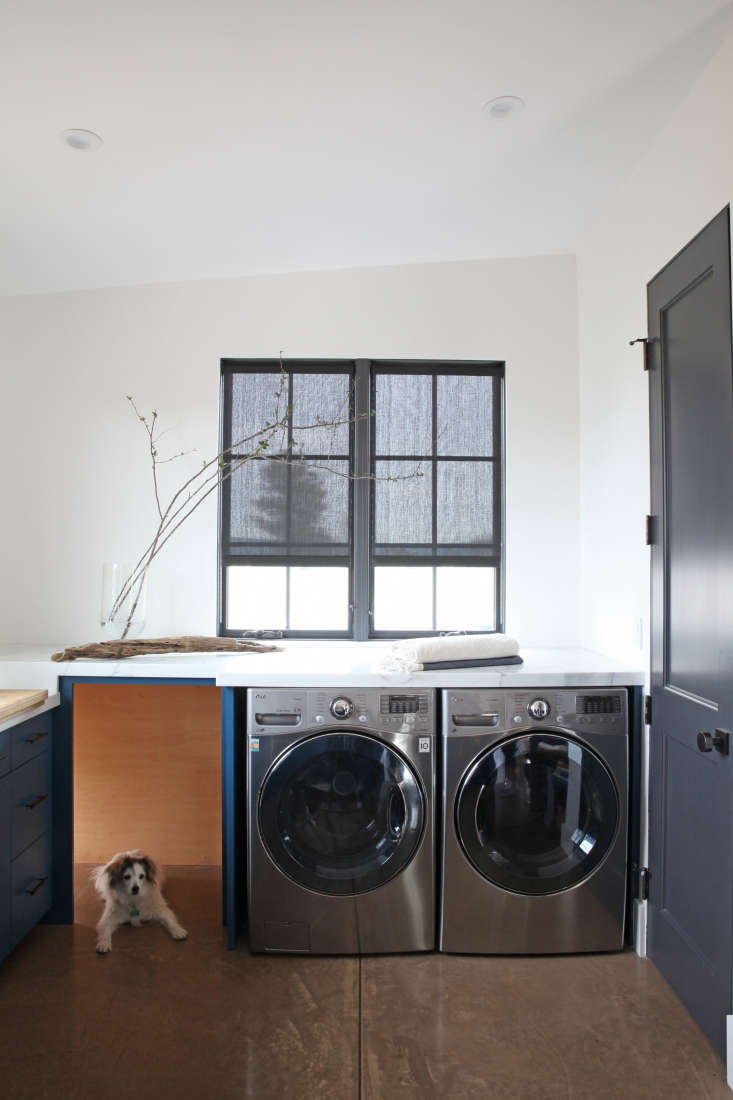

2. A Place to Hang Leashes and Towels
A mudroom is a luxury high on dog owners’ wish lists, but any entry equipped with hooks and storage will work–as long as it can be tread upon by dirty paws and spritzed with wet fur. Think twice before adding hand-blocked wallpaper, as we did, in our entry. What you need is a resilient staging area where your dog can be cleaned and dried before being unleashed into the rest of the house.


3. Resilient Flooring
“In a pet residence the floor is the first and most important consideration. Pets spend a lot of time on the floor; it’s our pets’ eminent domain,” writes dog design authority Julia Szabo in her book Pretty Pet-Friendly: Easy Ways to Keep Spot’s Digs Stylish and Spotless. Easy to clean, nonporous surfaces are ideal, she advises. Concrete and tiles work well, as do hardwood and bamboo floors (but be warned that dogs with scratchy paws are likely to leave their mark on soft woods.) Radiant heat flooring is a boon all around–energy efficient and a dog favorite. Carpeting is not recommended: It’s too hard to keep clean; but if you insist, Szabo recommends Flor carpet tiles–they’re removable and washable. Also consider Bolon, woven vinyl matting from Sweden that’s easy to clean and indestructible; I use it in my front hall to save our hardwood floor from all the snow and rain that gets tracked in.

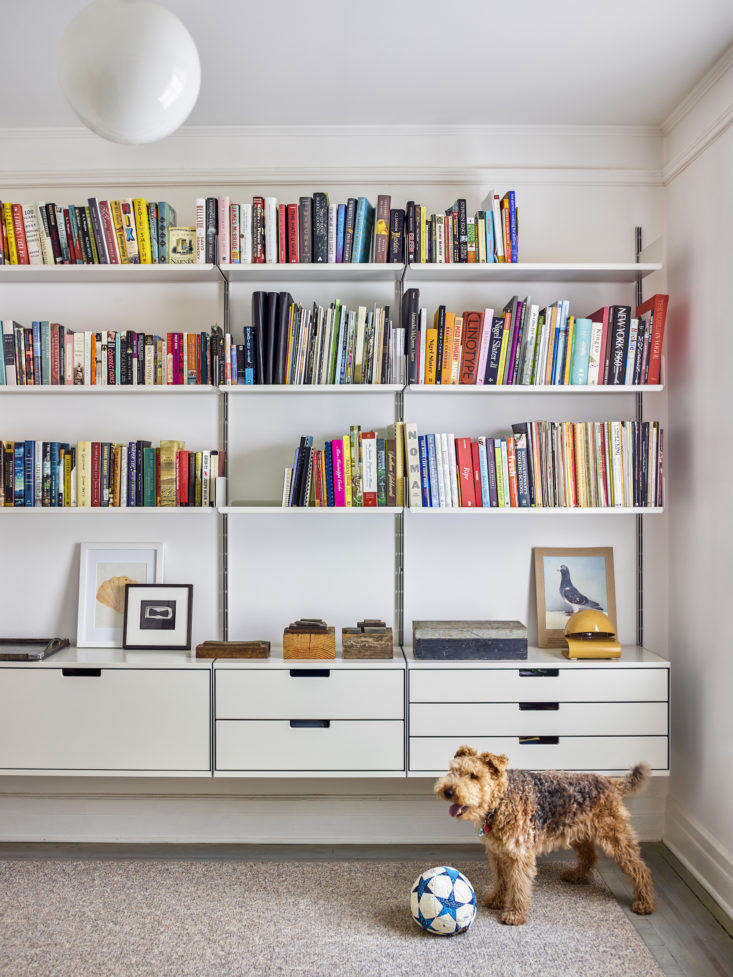
4. A Feeding Area
Too often dog bowls are left out in the open waiting to be knocked over. When designing a kitchen (or mudroom or laundry room), build in a convenient place for the food and water bowl to live. It will become one of your greatest daily satisfactions.
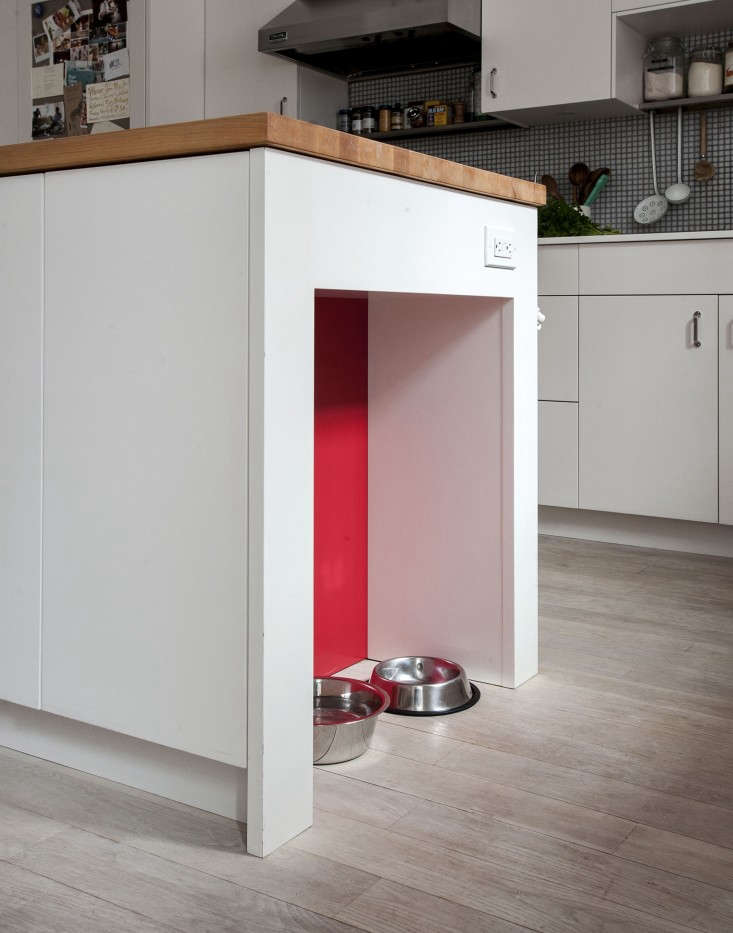

5. A Place to Stow the Kibble
Bags of dog food are unwieldy, not to mention unattractive and prone to attracting vermin. Having a built-in, air-tight bin is ideal.
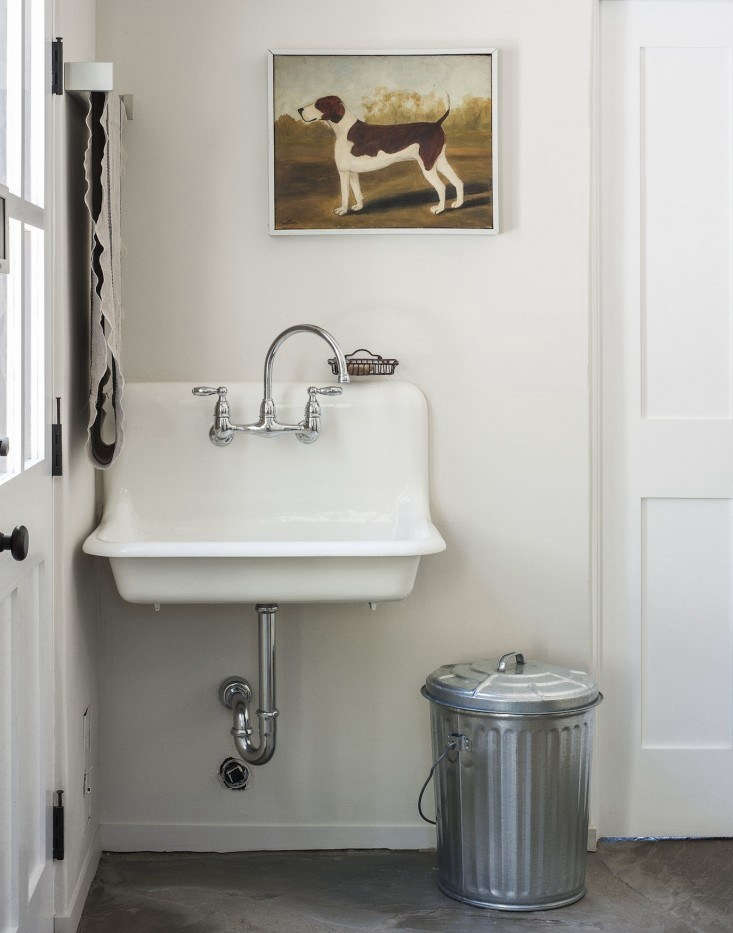

6. A Wash Station
A laundry sink works well as a dog bath for small- and medium-sized animals–and means you don’t have to bend over a low bathtub. Bonus: It’s easier to clean up a sink than a bathtub. Alternatively, consider installing a dog shower with a handheld nozzle–these work well in tiled niches in mudrooms and laundry rooms.
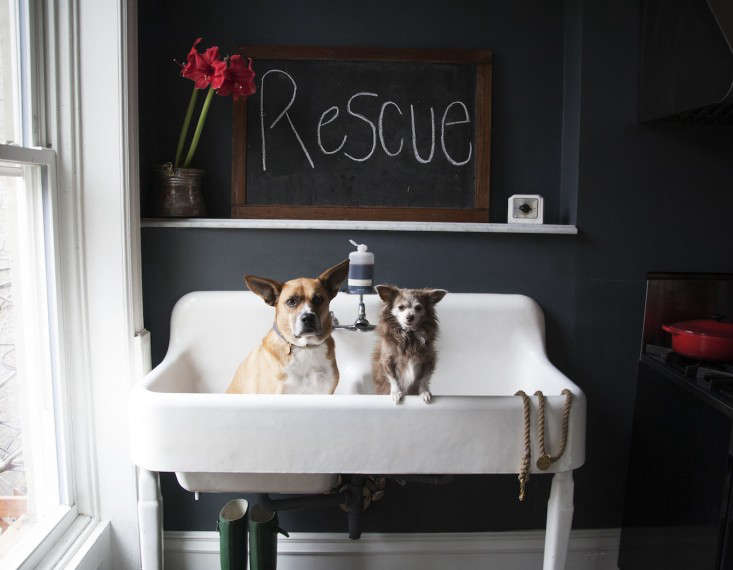
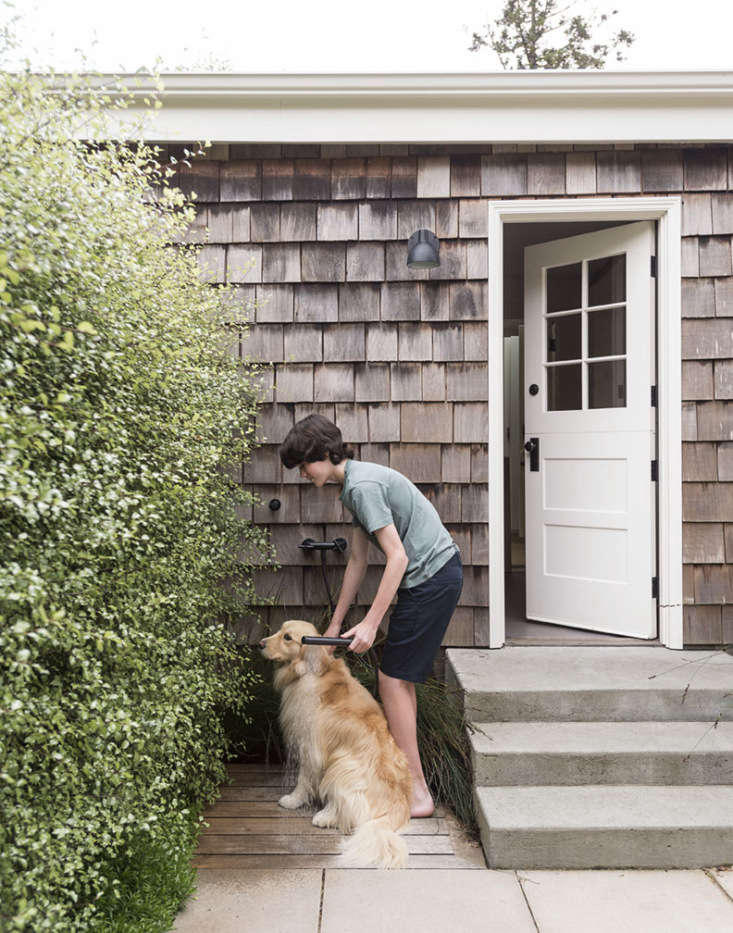
7. Pet-Proofed Furniture
Dogs don’t need to be allowed on the furniture, of course, but who can resist lounging on the sofa with a furry companion? It’s wise to protect the comfiest seats in the house by slipcovering them in washable fabrics. Alternatively, cotton painter’s drop cloths are a fast, affordable strategy. Our London editor, Christine, tucks a washable duvet onto her couch to dogproof it, and LA interior designer Michaela Scherrer drapes her living room furniture in claw-proof, spongeable white leather. If you’re thinking of reupholstering, Julia Szabo recommends Crypton, a stain-resistant, low-VOC, and formaldehyde-free fabric sold by the yard (some patterns are designed by William Wegman). And for an especially dog-friendly house, consider building a spot especially for your pets, such as a window seat or top-of-the-stairs lookout.


8. A Comfy Spot to Nap
Dogs need a place to retreat to where they can sleep soundly–”somewhere quiet and comfy but close to the action and free from drafts,” specifies Jeremy Cooper of Hindquarters. The hitch is that dog beds and crates hog a lot of space. Instead of allowing them to clutter your rooms, consider creating cozy built-in niches under shelves, islands, and stairs.


More on living with pets:






Have a Question or Comment About This Post?